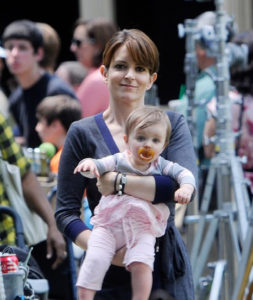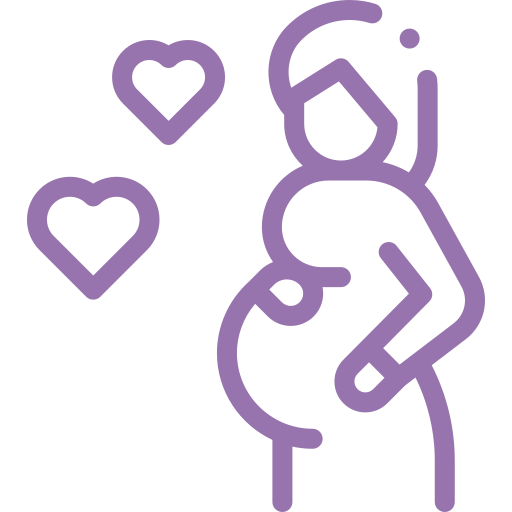The ‘Big Lie’ in Putting Off Pregnancy
[fusion_builder_container hundred_percent=”yes” overflow=”visible”][fusion_builder_row][fusion_builder_column type=”1_1″ background_position=”left top” background_color=”” border_size=”” border_color=”” border_style=”solid” spacing=”yes” background_image=”” background_repeat=”no-repeat” padding=”” margin_top=”0px” margin_bottom=”0px” class=”” id=”” animation_type=”” animation_speed=”0.3″ animation_direction=”left” hide_on_mobile=”no” center_content=”no” min_height=”none”]

Blame it on the baby bump and our pop cultural infatuation with celebrity, but today, regular women have yet another reason to feel inadequate: motherhood.
In the past decade, for the celebrity set, babies have become as fashionable as Birkin bags. The media has fueled the fertility frenzy by outing every pregnant, or potentially pregnant, Hollywood starlet. But then there’s more — with every aspect of a celeb mom’s glamorized pregnancy reported, from excessive weight gain to dramatic post-partum weight loss, regular women are fed a distorted depiction of pregnancy.
But perhaps nothing does a tragic disservice to women more than the media’s coverage of those over-35 celebrities who seem to easily get pregnant whenever they choose, writes Tanya Selvaratnam in her new book, “The Big Lie: Motherhood, Feminism and the Reality of the Biological Clock.”
We’ve all seen the US Weekly and People magazine images. There’s Halle Berry having a baby at 47 years old, and Kelly Preston doing the same. Uma Thurman had her third child at 42. Julianne Moore, Tina Fey and Salma Hayek each had daughters at 41 years old. Jane Seymour had twins at 45 and Mariah Carey birthed hers at 42. Not only do these women look ageless, they defy biology.
“One of the reasons I wrote the book was because I was frustrated by the conflicting messages and information out there,” Selvaratnam said. “We see celebrities having kids seemingly without any problems and we have no idea what they went through. We see the end result, but not the struggle.”
Ironically, motherhood has never been so chic at a time when so many women are struggling to get pregnant. The number of women between age 40 and 44 who remain childless has doubled in a generation; in 1976 it was one out of 10, by 2006 it was one in five, according to the U.S. Census.
In Selvaratnam deeply personal and provocative book, she shares her own journey of three miscarriages, multiple IVF treatments, cancer and the ultimate toll it took on her marriage. She explores the impact of delayed motherhood and the bad information that women receive, not only from aspirational celebrity images, but also from their own doctors.
Selvaratnam writes that after her first miscarriage at 37 years old, her OB-GYN told her that she still “had time” to get pregnant. So instead of rushing to a fertility center, she waited, and that was a serious mistake.
The “Big Lie,” she writes is that women can do what they want on their own timetables. They can delay motherhood until they are emotionally and financially ready, secure in their careers and have found that perfect partner and if they have trouble getting pregnant, modern medicine will miraculously give them a child.
Forty may be the new 30, but our ovaries have not gotten the same makeover. Even with all the advances in reproductive technology, our eggs have a finite shelf life and the odds of having a child over 40 years old are shockingly slim.
According to the Southern California Center for Reproductive Medicine, a woman in her 20s has a 20-25% chance of conceiving naturally per menstrual cycle. In her early 30s, the chance of pregnancy is 15% per cycle. After 35, the odds of pregnancy without medical intervention are at 10%. After 40, that number falls to 5%, and women over 45 have a 1% chance of conception.
The number of childless women in the United States today is growing. According to a Pew study conducted in 2008, about 18% of women in the United States don’t have children by the end of their childbearing years. In 2008, there were 1.9 million childless women between 40 and 44, compared with 580,000 in 1976.
From the Pew report: “Among older women, ages 40-44, there are equal numbers of women who are childless by choice and those who would like children but cannot have them, according to an analysis of data from the National Survey of Family Growth.”
Perhaps one of the greatest myths today is the ability of science to step in and make babies for women at virtually any age. Selvaratnam says that we see the success stories, but rarely hear about the huge numbers of failed attempts. A 2009 report on Assisted Reproductive Technologies, or ARTs, by the Centers for Disease Control and Prevention found that the single most important factor affecting the chances of a successful pregnancy through ARTs is a woman’s age. Selvaratnam reports that at age 40, the chance is 18.7%; at 42, it’s 10%; at 44, it’s only 2.9%.
Part 2 of this article will run tomorrow.
Article was originally published at: http://www.cnn.com/2014/01/22/living/pregnancy-big-lie-tanya-selvaratnam-books/[/fusion_builder_column][/fusion_builder_row][/fusion_builder_container]





















